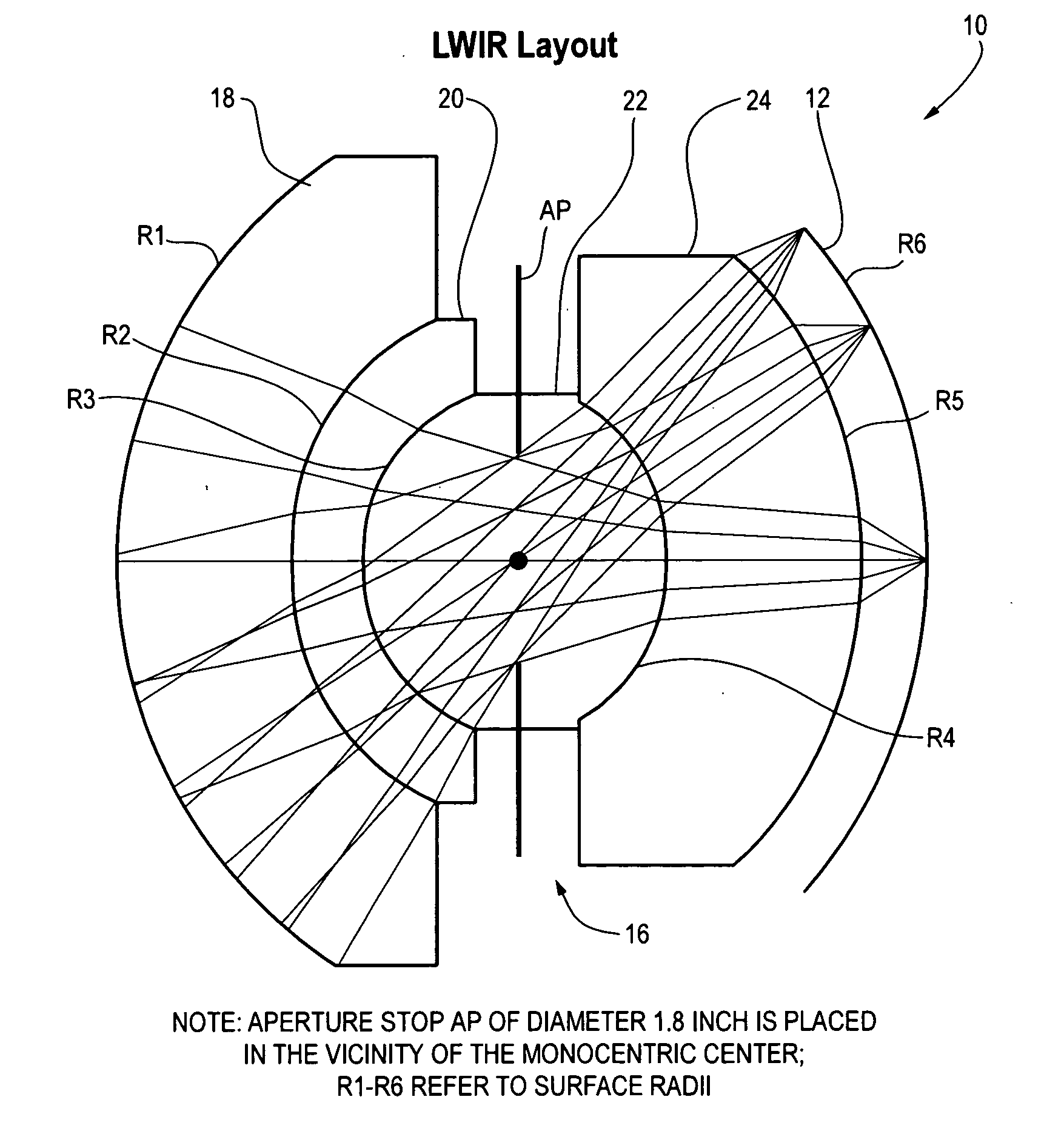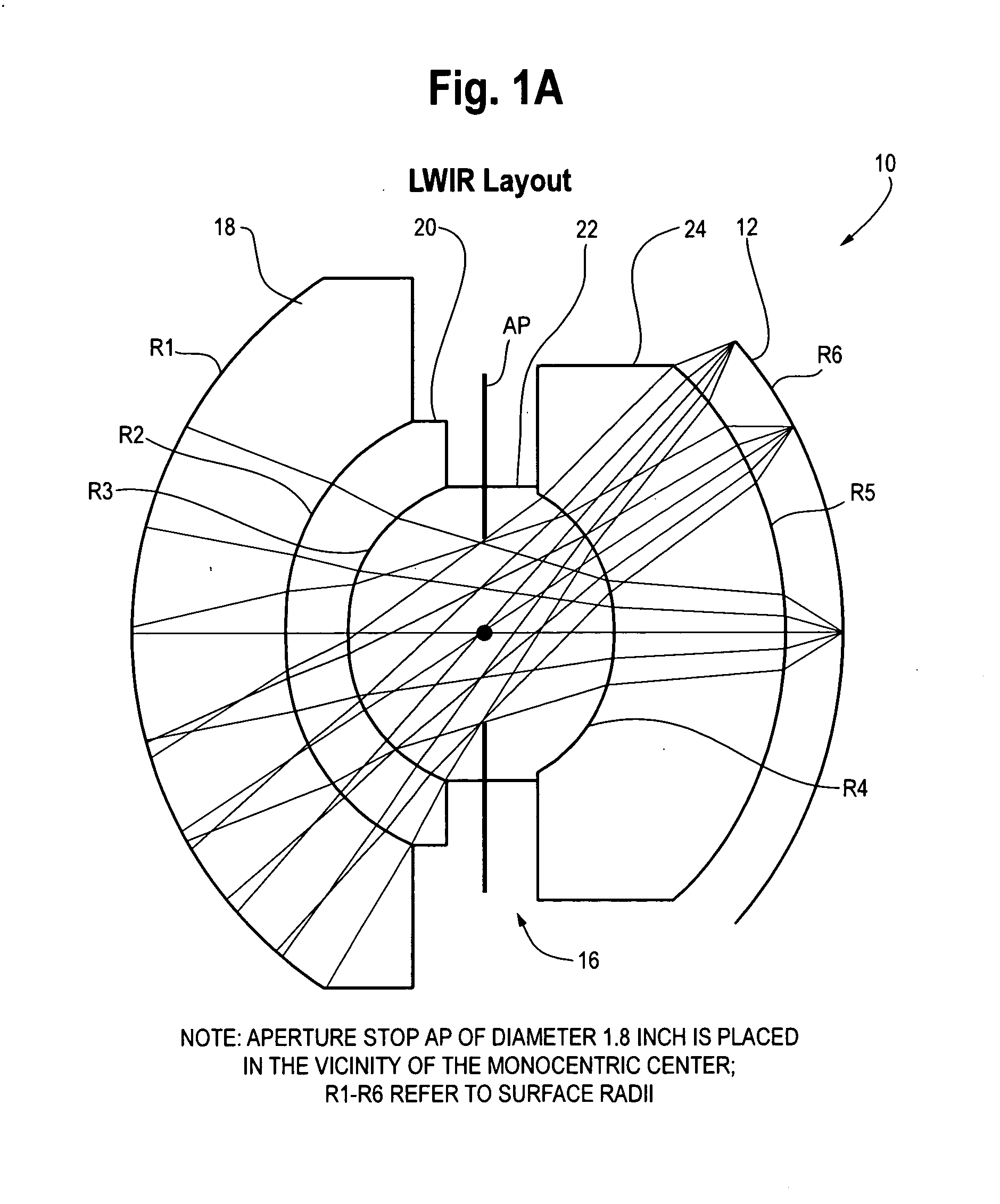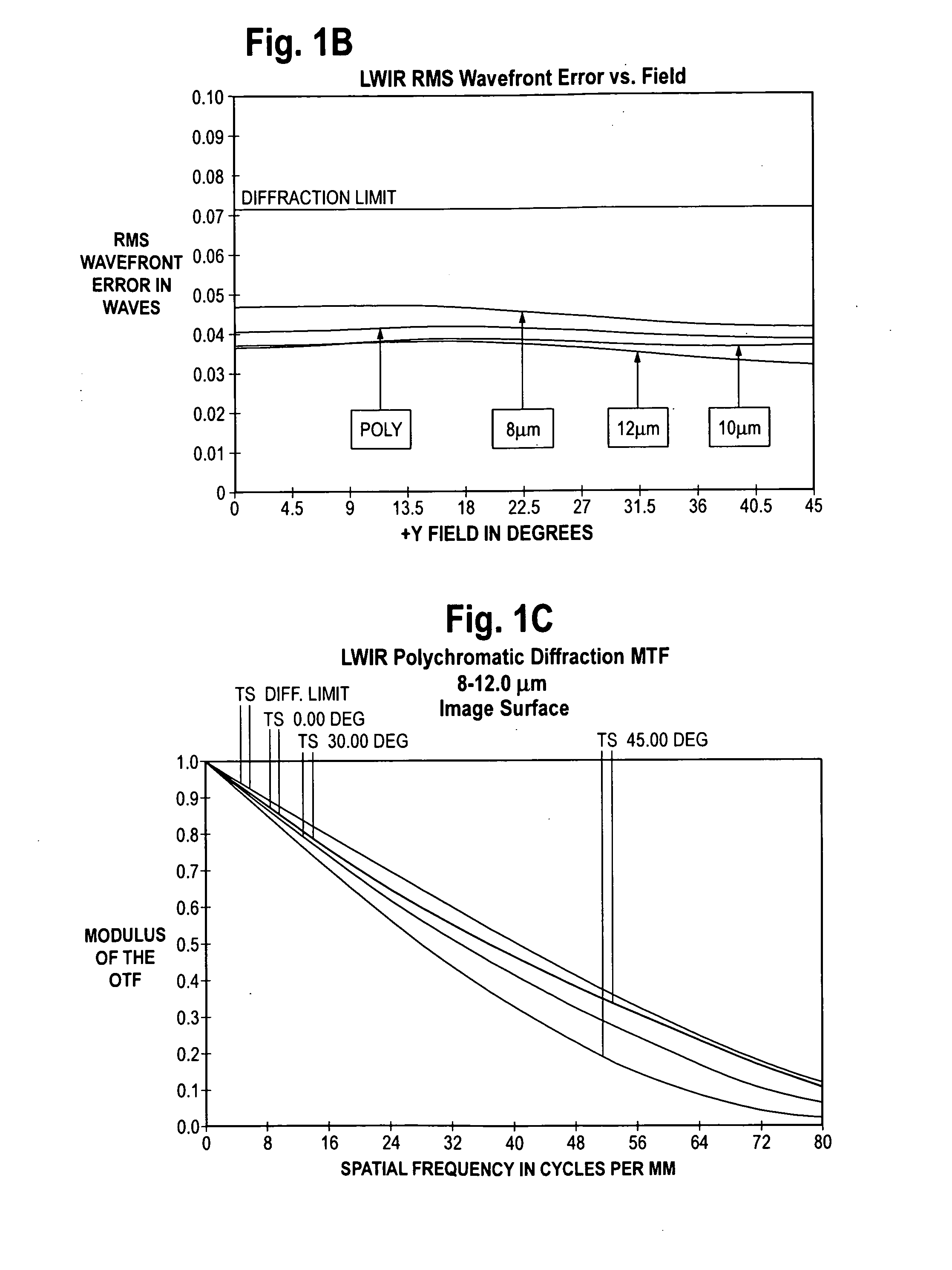Wide field of view monocentric lens system for infrared aerial reconnaissance camera systems
a monocentric lens and infrared aerial reconnaissance technology, applied in the field of optical systems, can solve the problems of inability to accept uav platforms, inability to realize infrared camera systems, and the '593 patent is too large for many uav applications, so as to minimize chromatic and spherical aberration, the effect of reducing the chromatic aberration
- Summary
- Abstract
- Description
- Claims
- Application Information
AI Technical Summary
Benefits of technology
Problems solved by technology
Method used
Image
Examples
first embodiment
[0069]FIG. 1A is a layout of a compact, light-weight, wide field of view optical system 10 suitable for use in a long wavelength infrared (LWIR) aerial reconnaissance camera. The optical system 10 includes a curved focal surface 12. A curved focal plane detector (not shown in FIG. 1A; see FIG. 6) as described below is positioned at the curved focal surface 12. The pixels of the detector (or mosaic of detectors) convert scene energy into electronic image signals which are transferred via an output register, then digitized and sent to a memory or signal processing electronics in known manner.
[0070]The optical system 10 includes a wide field of view monocentric lens system 16. The monocentric lens system 16 includes a first front shell lens element 18 and a second front shell lens element 20. The monocentric lens system includes a core lens element 22 and a rear shell lens element 24. As shown in FIG. 1A, the first and second front shell lens elements 18 and 20 and the rear shell lens ...
second embodiment
[0079]FIG. 2A is an illustration of a layout of the LWIR optical system 10 similar to the embodiment in FIG. 1A. The general remarks regarding the construction and arrangement of the system of FIG. 1A apply to FIG. 2A, with the exception that the selection of specific materials is different. In FIG. 2A, front shell 18 is made from ZnS, front shell 20 is made from Ge, rear shell 24 is made from Ge and the core 20 is fabricated from GASIR-1. A controlled air gap 30 separates the rear shell element 24 from the curved detector focal surface 12.
[0080]The materials selected for the lens of FIG. 1A provide improved transmissivity at the longer wavelengths of the LWIR band as compared to the lens of FIG. 2A.
[0081]FIGS. 1B and 2B illustrate the RMS (root mean square) wavefront error for the lenses of FIGS. 1A and 2A, respectively.
[0082]FIGS. 1C and 2C show the polychromatic diffraction MTF for the lenses of FIGS. 1A and 2A, respectively.
[0083]FIGS. 1D and 2D depict the transverse ray fan plo...
PUM
 Login to View More
Login to View More Abstract
Description
Claims
Application Information
 Login to View More
Login to View More - R&D
- Intellectual Property
- Life Sciences
- Materials
- Tech Scout
- Unparalleled Data Quality
- Higher Quality Content
- 60% Fewer Hallucinations
Browse by: Latest US Patents, China's latest patents, Technical Efficacy Thesaurus, Application Domain, Technology Topic, Popular Technical Reports.
© 2025 PatSnap. All rights reserved.Legal|Privacy policy|Modern Slavery Act Transparency Statement|Sitemap|About US| Contact US: help@patsnap.com



